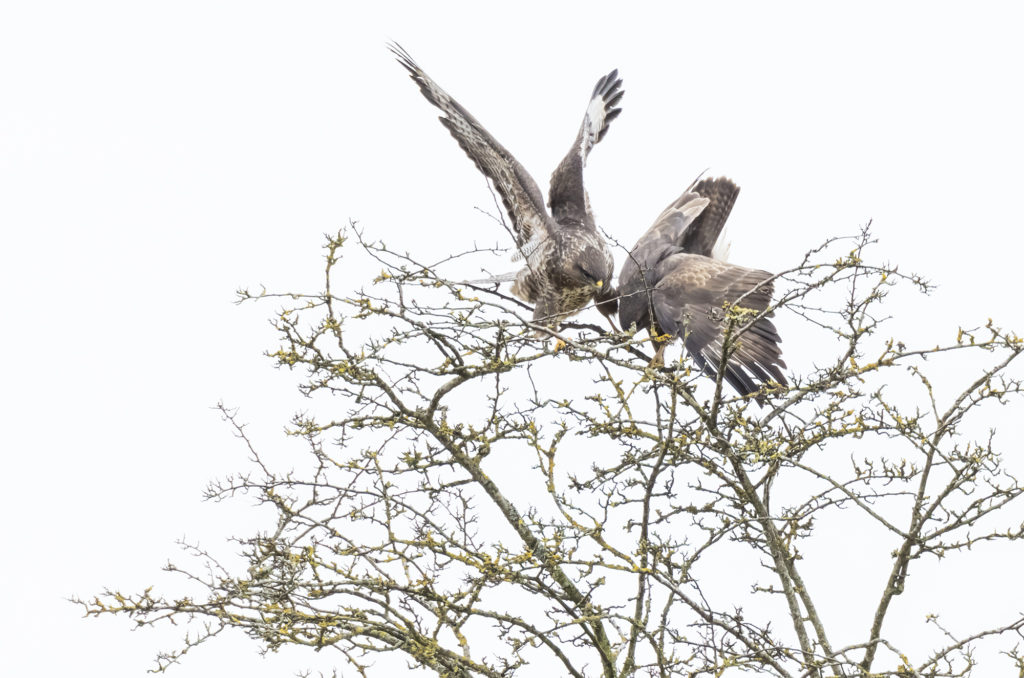The first clue was the screams of the lesser black-backed gulls overhead. I dismissed the raucous calls of the local corvid population, as they had been shouting all week. The gulls being noisy was something new. The reason for the ruckus arrived in the tree in front of me a few seconds later. First one, then two common buzzards. In a moment, I went from trying to keep an eye on one of the local foxes sitting in the dense undergrowth to pointing my lens at the two huge birds trying to balance on the thin branches just metres away from me.
All this action took place in a matter of minutes and these buzzards appeared in an area not a literal stone’s throw away from my flat but close enough. This is a perfect example of why I adore my local patch; I know a wide variety of wildlife is there and I just have to be in the right place at the right time to see it.
This encounter with the buzzards made me think again about a book I would like to recommend to you if you haven’t read it already – Bird Therapy by Joe Harkness.
Bird Therapy is an invitation to discover how birdwatching can unlock something inside you, which feels more appropriate than ever with so many people living in lockdown. In Joe’s case, birdwatching has helped him cope with depression and anxiety and he is refreshingly honest about his mental health issues in his book. He also provides tips on birdwatching and one of these includes finding a local patch and sticking with it. I am certainly sticking with mine. I will be sharing more about the wildlife I’ve discovered there on this blog over the coming months.
I was interested to hear Michaela Strachan talk about sexing buzzards on this year’s Springwatch. I know that the females are larger, but I struggle to see a difference in the size of the birds in this image. On the programme, they noted that the male had the brighter yellow on its beak and a stripier chest than the more blotchy plumage on the female. Looking at my images, that would mean that the bird on the left is a male. What do you think?
For now, I will leave you with another image of the buzzards that were announced by the gulls. Sadly the light was rubbish when I captured these images, but I still like them as they clearly show the two birds struggling to perch together.


